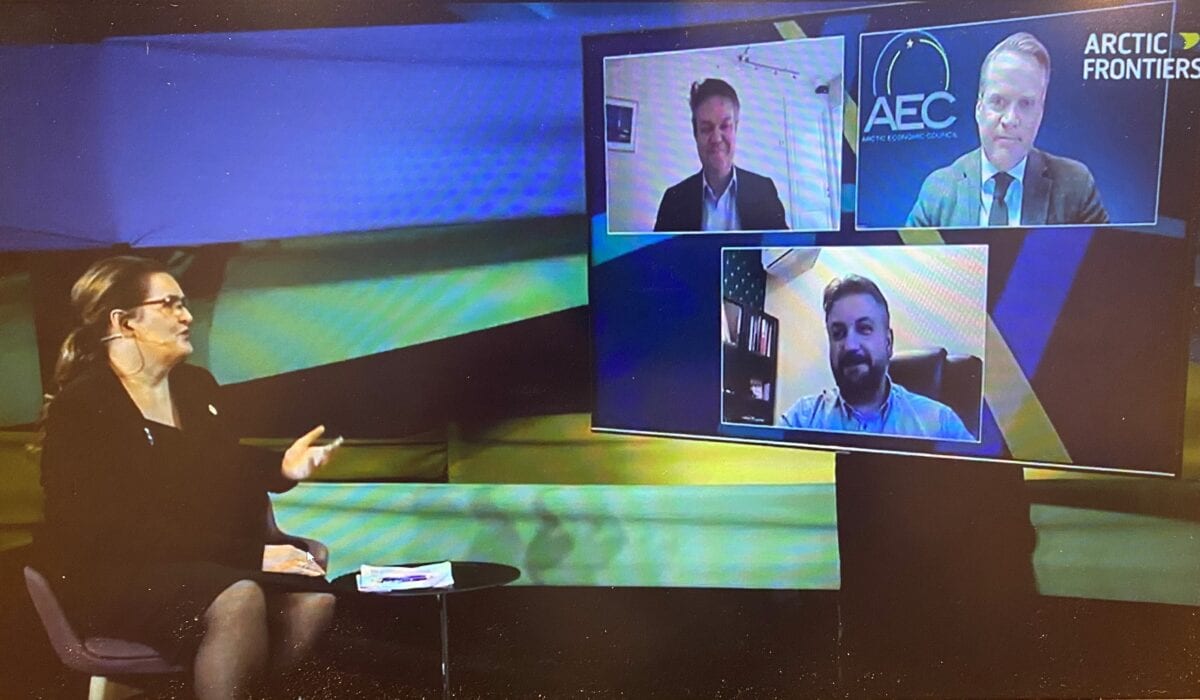
Meeting Future Energy Needs at the Arctic Frontiers Conference
Interesting and important discussions at Arctic Frontiers´ Business Solutions theme day. Chairman of the Arctic Economic Council (AEC), Heidar Gudjonsson, focused on the importance of infrastructure when he participated in the «Carbon Capture and Meeting Future Energy Needs» session.
«The growing need for energy and the desire to become carbon neutral offer a unique paradox that require innovation from our business leaders», wrote the Arctic Frontiers organizers about the «Carbon Capture and Meeting Future Energy Needs» session.
Transport is the Foundation of Business
– The Arctic Economic Council (AEC) champion economic sustainable development. Some people seem to think that all economic development is at the expense of the environment. We argue otherwise. There is no other region in the world which can challenge the track record of the Arctic for being economically sustainable. It is admirable. We have a long history of mining, oil and gas, fishing and farming. It would be foolish to champion other areas for economic development when we already have a leader in that regard, said Heidar Gudjonsson, Chair of the AEC.
In the panel with Heidar Gudjonsson was Steinar Eikaas, VP-Low Carbon Solutions in Equinor, an AEC member, and Yury Vasiliev, Executive Director of the Institute of Arctic Technologies at the Moscow Institute of Physics and Technology. The session was moderated excellently by Liv Monica Stubholt.
Gudjonsson emphasized that we need to do more with less and that the Arctic can help so that the world economy is doing just that.
– In this panel we are talking about business solutions, which prove that you can do more with less. Transport is the foundation of business – without any transport there will be no business. As an interesting example I can mention that the last 25 years advances in icebreaking technologies has cut down costs of transport in the Arctic by over 70%, said Gudjonsson.
One Size does Not Fit All
Gudjonsson pointed out the heavy fuel oil ban as an example of the vast differences in the surroundings of Arctic communities. Stating that the ban was a positive move, but for the remote communities this is the only power they have available, which means to pull the plug on these communities if we would have the ban apply equally to everyone.
– When we look at how to capture carbon we have to bear in mind that the Arctic varies a lot. We have clusters like e.g. Tromsø and Reykjavik where we have very modern infrastructure, but you also have other areas which are really remote and that does not support costly infrastructure. We cannot say that one size fits all and that we need to have the same rules everywhere. We must take into account the different surroundings and circumstances we have in both urban and remote Arctic settings, said Gudjonsson.
We Need to Look Responsible into the Future
The AEC promotes the use of the Arctic Investment Protocol (AIP). The Protocol guides businesses to behave responsibly when investing and operating in the Arctic.
– We have a lot of newcomers in the Arctic, e.g. China and Japan, that we try to bring the best practices to. They have fantastic expertise in infrastructure, where the west is left behind. We can learn a lot from them, but they need to adapt to the sustainable way of doing business in the Arctic, said Gudjonsson.